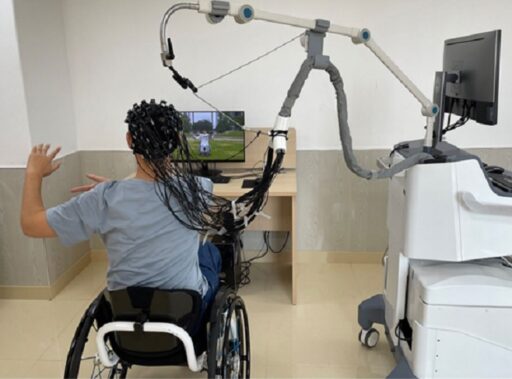Wheelchair Tai Chi (WCTC) has been proved to have benefits for the brain and motor system of spinal cord injury (SCI) patients. However, the characteristics of corticomuscular coupling during WCTC are scarcely known. A Chinese study published by Journal of neuroengineering and rehabilitation in U.K. in June investigated changes following SCI on corticomuscular coupling, and further compare the coupling characteristics of WCTC with aerobic exercise in SCI patients.
A total of 15 SCI patients and 25 healthy controls were recruited. The patients had to perform aerobic exercise and WCTC, while healthy controls needed to complete a set of WCTC. The participants accomplished the test following the tutorial video in a sitting position. The upper limb muscle activation was measured from upper trapezius, medial deltoid, biceps brachii and triceps brachii with surface electromyography. Cortical activity in the prefrontal cortex, premotor cortex, supplementary motor area and primary motor cortex was simultaneously collected by functional near-infrared spectroscopy. The functional connectivity, phase synchronization index and coherence values were then calculated and statistically analyzed.

Compared to healthy controls, changes in functional connectivity and higher muscle activation were observed in the SCI group. There was no significant difference in phase synchronization between groups. Among patients, significantly higher coherence values between the left biceps brachii as well as the right triceps brachii and contralateral regions of interest were found during WCTC than during aerobic exercise.
Conclusion:The patients may compensate for the lack of corticomuscular coupling by enhancing muscle activation. This study demonstrated the potential and advantages of WCTC in eliciting corticomuscular coupling, which may optimize rehabilitation following SCI.
ATCQA Members and Certified Instructors/Practitioners can read the full version of the article after signing into their accounts.